Over more than two decades, our cat behavior forum has become a hotbed of discussions, questions, and shared experiences relating to such feline mysteries.
In this article, we've consolidated the wisdom gathered from thousands of cat owners worldwide to discuss the nine most common cat behavioral issues our community encounters.
Some behaviors are merely innate tendencies that may require your patience and redirection. Other behaviors might be indicative of medical complications or stress. For many issues, a combination of factors might be at play.
Understanding these common feline behaviors is key to nurturing a harmonious coexistence with your whiskered friend, from the seemingly mundane to the significantly troubling.
Whether your cat is neglecting the litter box, waking you up at the most ungodly hour, or suddenly acting aggressively, understanding the root cause is the first step in devising an effective resolution.
We hope this compilation aids you in navigating these common challenges, ensuring your furry friend enjoys a life of comfort, security, and loving companionship.
Can you guess what the top 9 problems are? Let's find out together!
Top 9 Most Common Cat Problems
Some of these are natural cat behaviors that need to be redirected. Others are actual problems derived from medical issues or stress. With some, it's a mix.
1. Litter box problems
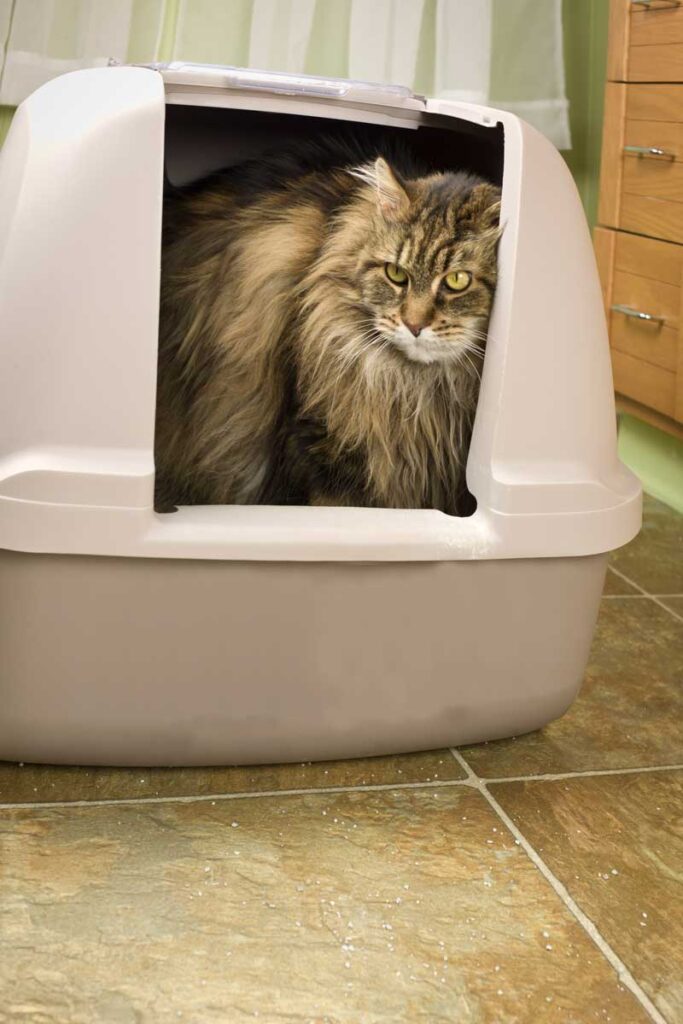
The most frustrating of all cat behavior problems are the ones that involve inappropriate elimination.
Most kitties are very good about using the litter box, which is part of their allure as a house pet. There's no need to take your cat out for daily walks. All you need to do is provide them with a litter box, right?
Unfortunately, that's not always the case.
When a cat begins to pee or poop outside the litter box, you have a problem on your hands. The key to solving it? Figuring out why your cat stopped using the box. There are three main possible reasons -
a. Kitty has a medical problem
There are a variety of medical conditions that could lead to pain during urination or defecation. When that happens, your cat will begin to associate the litter box with pain, making him or her avoid that spot.
Urinary tract issues can be particularly persistent and recurrent. More often than not, if a cat begins to pee outside the box, he or she has developed a form of Feline Lower Urinary Tract Disorder or FLUTD.
What you have on your hands is a medical problem. You need to make an appointment with your vet ASAP.
In the case of a male cat that is straining to urinate, generating only small amounts of urine at a time, you could be dealing with a medical emergency: urinary tract blockage.
In addition to the pain and discomfort, this could be a life-threatening situation within a matter of hours. Call your vet immediately.
Do not attempt to correct the behavioral problem before you have the “all clear” from the vet.
A sick kitty has no control over its elimination pattern. Anything other than quietly cleaning up after your cat is pointless.
Even reprimanding the cat would do nothing but add to its stress, potentially complicating both the medical and behavioral problems.
The solution
Take your cat to the veterinarian. They will diagnose the condition and treat it. Only once the cat is no longer in pain, can you start re-training her to use the litter box again.
b. The litter box is not set up properly
Your cat should have a large, easily accessible, and clean litter box available to them at all times. Many cats do better with two boxes, especially in a larger home.
You should have even more litter pans if you have more than one cat. Ideally, one per cat, plus one additional box. So, for two cats, you should set out three litter boxes. Four cats? You need five litter boxes. And so on.
The solution
Learn more about properly setting up the litter box and fixing any issues you might have.
Read more: The 10 Most Common Litterbox Mistakes Cat Owners Make
c. Your cat is stressed out
Stress can affect cats in many ways. In some cats, stress can trigger a medical condition called Feline Idiopathic Cystitis, where Kitty's bladder is inflamed.
The stress could lead to peeing outside the box. While the condition is medical, it's often triggered by anxiety.
The solution
Try to reduce the stress in your cat's life. You could do this by making some changes around the home. In some cases, a veterinarian may prescribe anti-anxiety drugs to treat the problem.
SIGN UP FOR THECATSITE'S EMAIL UPDATES >
Fixing litter box problems
Where do you begin with so many potential reasons for litter box avoidance?
Start by talking to your veterinarian. Medical issues must be ruled out (or diagnosed and treated) before you can begin to address this particular problem. Next, you have to closely examine how the litter box is set up, as well as Kitty's overall stress levels.
To help you, we've created this guide to cat litter box problems. It will take you through the various steps you need to take to fix this issue.
2. Cat aggression toward people
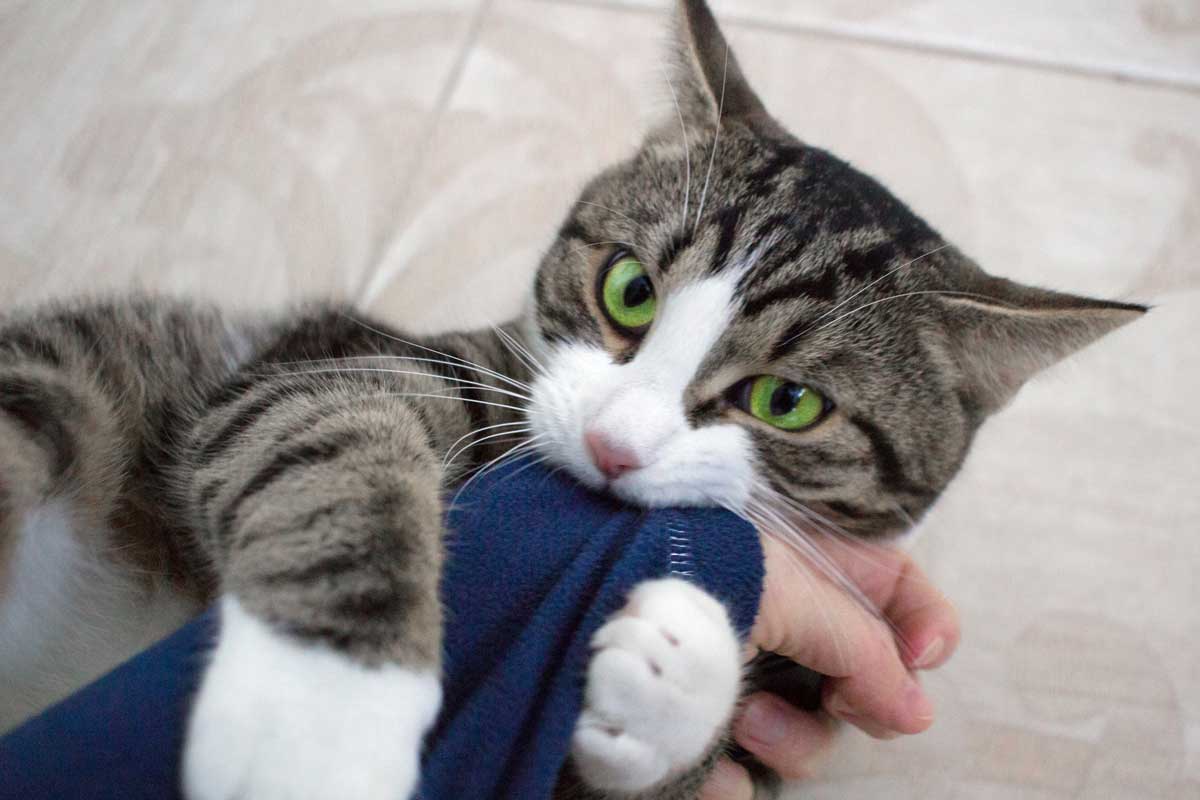
Our beloved kitties come equipped with teeth and claws. The result can be painful when they use these against other people in our home or us.
In some cases, it can even be dangerous, as these wounds tend to become infected.
However, not every cat scratch or bite is an indication of an actual aggression problem.
Playtime aggression in kittens is perfectly normal. You just need to learn how to redirect it to an appropriate toy.
Read here on how to stop playtime aggression in cats.
Some cats practice love bites occasionally. These are perfectly harmless, but if they bother you, there are ways to teach Kitty to stop.
Read here about cat love bites.
And yes, sometimes, you have an actual problem with severe cat aggression. And again, the key here is to figure out why Kitty bit or scratched you.
Other times, a cat may be displaying redirected aggression. Something else scared Kitty. Sometimes all it takes is seeing (or even smelling) a strange cat outside the home.
Fear then drives the cat into a "Fight or Flight" mode, at which point, anyone attempting to touch or pick her up, may be on the receiving end of a full-blown "Fight response".
Rule out physical problems first
Your cat may have attacked because she is in pain due to injury or illness. When an unsuspecting owner touches a sore spot, a cat may instinctively lash out to stop the pain.
This may be the first - or even only - clue that lets you know Kitty is ill.
Read more: 35 Signs That Your Cat May Be In Pain
Aggressive behavior, whether directed at humans, dogs, or other cats, can be a sign of a physical problem. Pain-induced aggression is a genuine thing.
If your otherwise calm and playful kitty suddenly becomes “nasty,” she could be in pain. The cause may be an abscessed tooth, an earache, or another ailment unrelated to being touched.
It could also be a neurological condition, affecting the cat’s perception of its surroundings and making it lash out. Head to the vet for a checkup when unexpected or unusual aggression starts.
Again, do not try to address the issue using behavioral measures before you get the “all clear” from the vet.
You won’t be able to change the cat’s behavior, and you could be neglecting a medical problem that needs immediate attention.
The solution
When cats attack, the key to the solution is to identify the cause and address whatever triggers the attacks.
To help you out, we've created several in-depth guides on aggressive behaviors. You should start by reading this one: Why do cats attack?
3. Cat attacking other cats

Next on our list of common complaints is another form of feline aggression. This time we're talking about cats that attack other cats and sometimes other pets in your home.
You might be dealing with sporadic attacks, often following a visit to the veterinarian.
Or you could be dealing with an ongoing war between two or more of your kitties. Sometimes cats simply don't get along with one another, especially if they were not properly introduced or if they need to compete over access to food or litter boxes.
These situations can be very stressful for the cats involved, as well as for the owner.
The solution
Again, you need to figure out what's wrong and address the root of the problem. Make sure the cats have enough space, including access to enough food and an adequate number of litter boxes.
If the cats were not properly introduced, you might need to temporarily separate them and then go through the introductions phase again.
These guides may help you solve the issue:
How To Deal With Non-recognition Aggression In Cats
How To Fix An Unsuccessful Cat Introduction
4. Scratching furniture
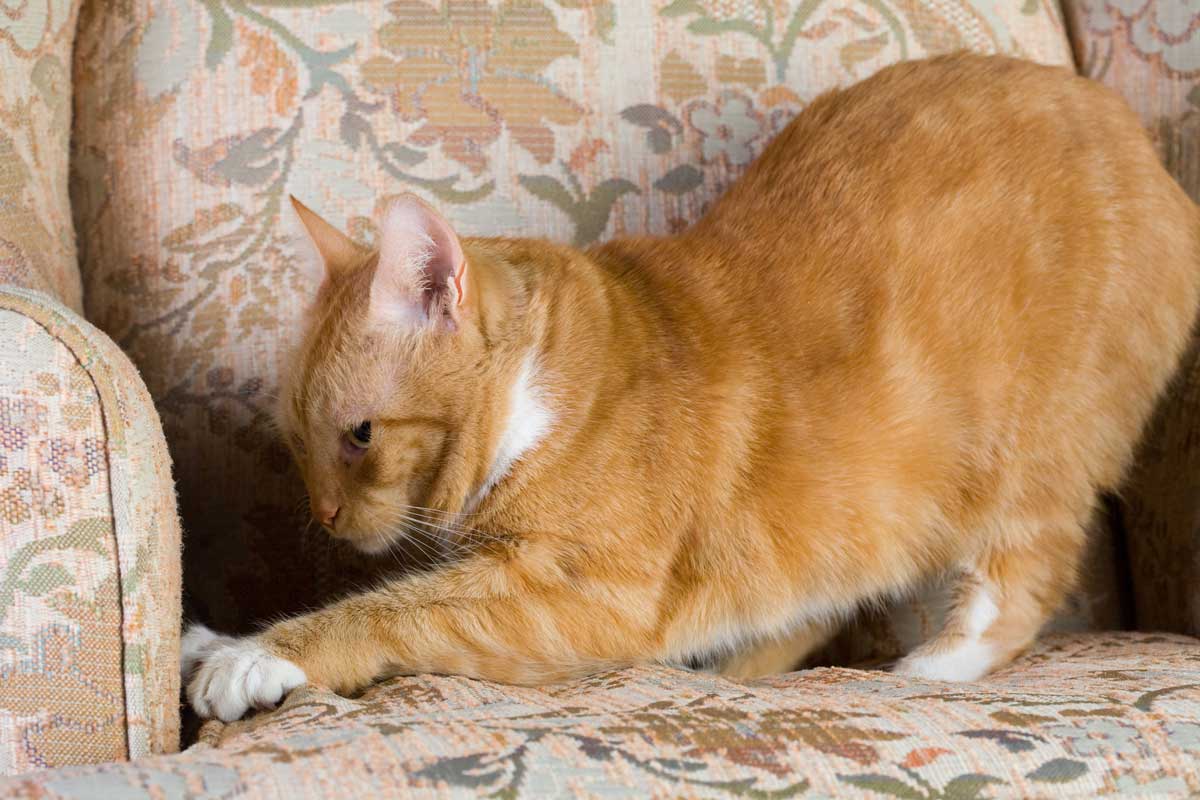
Felines have a natural urge to scratch certain objects in their territories. Lions, for example, claw at trees.
This is a form of territorial marking, but the act in itself provides the cat (big or small) with a sense of contentment and stress release. It also helps keep the claws sharp and healthy.
In a way, scratching the furniture or carpets is not a behavior problem. It certainly does not indicate that there's something wrong with the cat. You could say the problem is with us humans, who prefer to keep our furniture intact.
The solution
Let's start by saying what is NOT an acceptable solution.
Declawing your cat is a painful and cruel procedure that is illegal in most countries. The American Association of Feline Practitioners also strongly opposes declawing.
Even if it happens to be legal where you live, please do not declaw your cat. Check out our article about declawing and its alternatives to learn more about the topic.
So, what can you do?
You need to provide Kitty with adequate scratching posts. The scratching posts should be sturdy, heavy, large enough, and stable.
You should offer more than one, preferably using varied types, some horizontal and some vertical, and with a variety of textures.
Once your cat has a suitable scratching post they seem to like, you can start blocking access to the furniture you want to protect, gradually teaching your cat where scratching is allowed.
Read more here: 23 Proven Ways To Stop A Cat From Scratching Furniture
5. Cat waking you up at night

Getting a good night's sleep can be challenging for many people. So when Kitty comes over to wake you up at 4 AM, it's perfectly natural not to be happy about it.
It's natural for your cat to be awake when you're trying to get some shuteye. Humans and felines live by different biological clocks.
While we're diurnal creatures, designed to sleep when it's dark outside, our cats are crepuscular animals. That means they tend to be most active during dusk and dawn.
Up and about, bored, and possibly hungry, your cat may try to wake you up. After all, from the feline's point of view, their owner has a behavior problem.
Why else would they be sleeping in at these critical times of the day?
The solution
Solving this particular problem calls for making adjustments. You'll need to make sure your cat is getting enough stimuli when you're up and about, and then teach the cat that waking you up at night doesn't pay off.
Read more: our detailed step-by-step plan for breaking Kitty's habit of waking you up at night.
6. Not being friendly enough (or being too friendly)
When adopting a cat, most people have their expectations as to how friendly the cat should be.
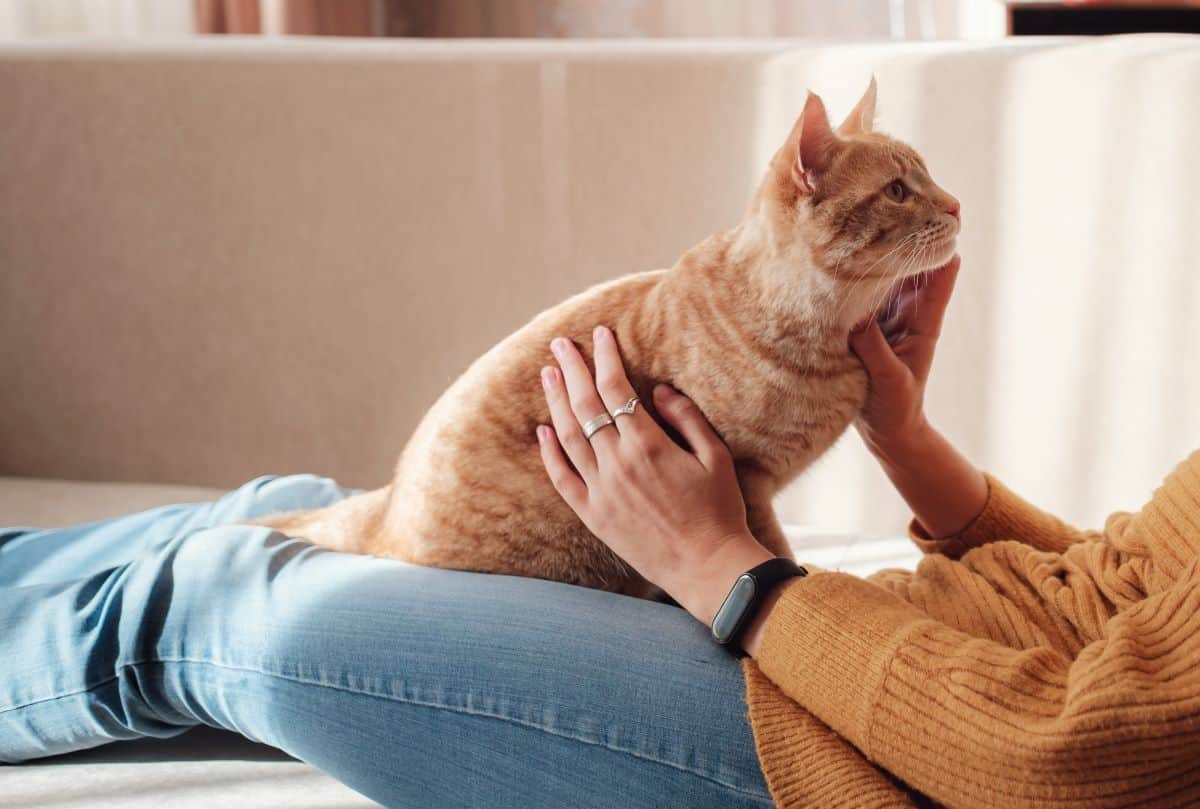
However, just like humans, cats have their own personalities, with some being more social than others.
That's when we hear complaints from both ends of the spectrum. Some owners complain that their cat is shy, reserved, or "doesn't love them," while others complain that their cat is too clingy.
The solution
In most cases, there is no real "cat behavior problem" here. Cat owners just need to accept that their cat may have a different personality than they had hoped for.
With time, they learn to get to know their new furry friend, and both sides adjust to each other's needs and preferences.
If you're dealing with a particularly shy cat that tends to hide under the bed, there are ways to make him or her more comfortable.
Take a minute to read these tips for living with a shy cat to learn more.
7. An overly vocal cat
Kitty going around your home, meowing loudly? For some people, that can become a real problem.
When and how often your cat tends to make these loud sounds matters. Some cats tend to meow often and loudly.

Others are quieter by nature. If you know your cat, he or she seems otherwise happy, and they're just talkative, that's fine.
However, if your cat has changed their vocalization patterns and has begun to meow more, possibly even howl, you need to pay attention.
The solution
The sudden onset of extreme vocalization requires medical attention. It could be a sign that your cat is either in pain or disoriented.
With young, unspayed females, loud meowing and howling could mean your cat is coming into heat, so please get her spayed asap.
8. Chewing household objects
Is Kitty chewing on stuff? Maybe even making holes in your favorite sweater or blanket?
This could be normal behavior when a cat sucks or chews on things. Especially in kittens.

Kittens, much like babies, experience a teething phase. As they lose their baby teeth and grow permanent teeth, chewing on things can help alleviate the discomfort.
In some rare cases, cats suffer from a disorder called pica. That's when a cat chews and ingests things that aren't food. Pica in cats often involves wool and may be a sign of nutritional deficiencies or stress.
The solution
If you suspect your cat has pica, talk to your veterinarian. Otherwise, if you have a kitten or young cat that keeps chewing on household items, read this article on how to stop destructive chewing behavior in cats.
9. Excessive self-grooming
Cats are known for being clean animals, primarily because they groom themselves by licking their fur. Sometimes, self-grooming can become excessive, to the point of creating bald spots.
Excessive self-grooming is often caused by stress, though some cats are more prone to the behavior. Other times, fleas or some skin issues could be at the root of this habit.
The solution
Start by talking to your veterinarian to rule out any medical problems. Once medical issues have been treated - or ruled out - it's time to consider stress reduction techniques.
Other issues
We've covered the more common complaints we see from cat owners in the cat behavior forum. Here's the list again -
Here are the top 9 cat behavior problems that people bring up in the cat behavior forum -
- Litter box problems
- Cat aggression toward people
- Cat attacking other cats
- Scratching furniture
- Cat waking owner up at night
- Not being friendly enough (or being too friendly)
- An overly vocal cat
- Chewing household objects
- Excessive self-grooming
There are many others, though. Or at least variations of these issues. Over more than two decades, we've seen them all!
If you think you have a cat behavior problem, we encourage you to join our community and post your question in that forum.
There are 5 Steps to Solving ANY cat behavior problem!
We touched on all five throughout this guide, but if you need a recap, or want to understand the process in more depth, check out this guide: 5 Steps To Solving Any Cat Behavior Problem
SIGN UP FOR THECATSITE'S EMAIL UPDATES >
Need to add this article to Pinterest? You can use this image -
![Cat Behavior Problems [What to do and what not to do]](https://thecatsite.com/c/wp-content/uploads/2019/12/Cat-Behavior-Problems-What-to-do-and-what-not-to-do.jpg)
Note: We may get commissions for purchases made through links on this page.


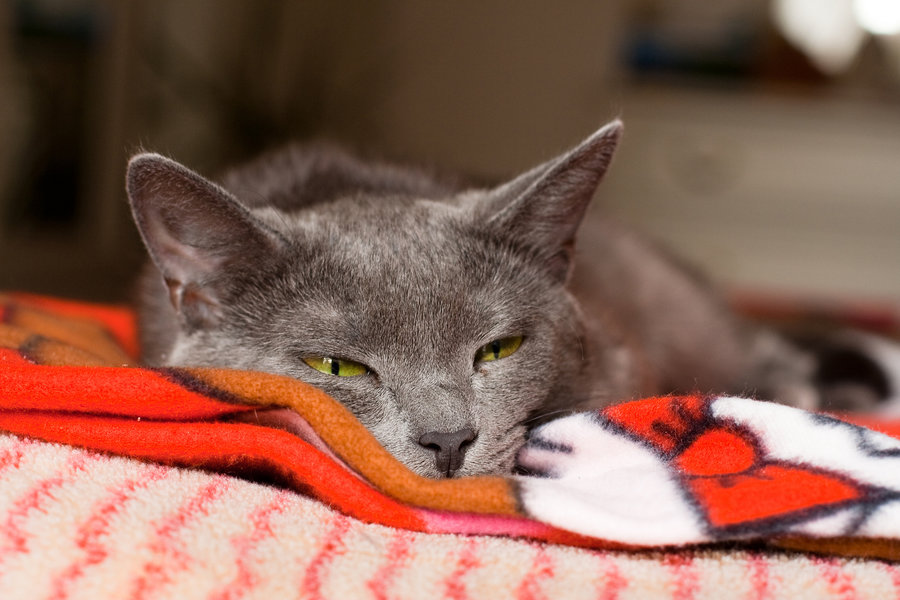

26 comments on “Top 9 Cat Behavior Problems [And How To Deal With Them]”